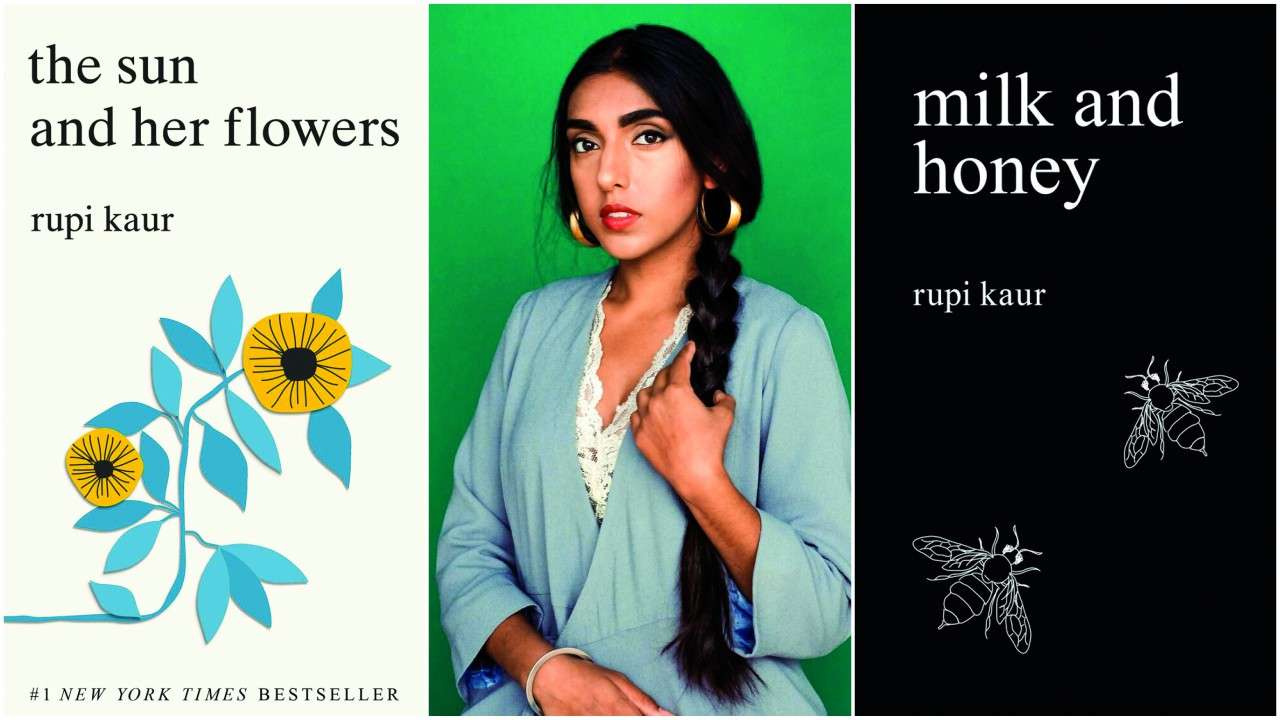
Celebrated and censured for her easy, Insta-inspiring verses and a rather symmetrical vocalisation of gender trauma, Rupi Kaur is a 25-year-old Canadian poet of Punjabi descent who found her way from social media sites to bestsellers. With a second book, 'The Sun and her Flowers', published late last year, and her tour of India kicking off in Jaipur, Kaur answers questions about her roots, writing, identity and more.
I'd been writing poetry since elementary school just for fun, for my friends or my crushes. But I started taking writing seriously toward the end of high school, when I began to perform at open mics held in community spaces. In university, I studied Rhetoric, which meant intensive writing work. The first platform I posted on was Tumblr. There was a large community who shared, consumed and communicated there and from there I began to share on different mediums including Instagram.
Initially, my writing was for myself — a personal release. What I couldn't convey to others, I wrote. I wrote of my experience. Heartbreak. Hopes fulfilled and aspirations lost. Eventually, I began to recite these words on stage. Now, my shows are long sets, set to music and theatrical in many ways. My writing helped me find my voice to be myself.
The performative nature of my spoken performances seeps into my written word.
Further, although I can read and understand my mother tongue (Punjabi) I do not have the skillset to write poetry in it. To write in Punjabi means to use the Gurmukhi script. And within this script there are no uppercase or lowercase letters. All letters are treated the same. I enjoy how simple that is. How symmetrical and how absolutely straightforward. I also feel there is a level of equality this visuality brings to the work. A visual representation of what I want to see more of within the world: equalness. The only punctuation that exists within Gurmukhi script is a period. Which is represented through the following symbol: | So in order to preserve these small details of my mother language I include them within this language. No case distinction and only periods. A world within a world. Which is what I am as an immigrant — a diasporic Punjabi Sikh woman. It is less about breaking the rules of English (although that’s pretty fun) but more about tying in my history and heritage within my work.
Both form and the literary word are important to me. Whether that is me engaging with the works of writers and poets that have been important in my formative processes — Joan Didion, Junot Diaz, Maya Angelou, Alice Walker, Khalil Gibran, Nizar Qabbani, Sylvia Plath, Sharon Olds, Jhumpa Lahiri and Baba Farid — or the ways that I love how words and illustrations look, feel and co-exist for a reader.
Often this essentialization argument is a tactic used to segregate and dismantle people within a particular group. There’s a flawed scarcity model at play — the belief that only one person can come to represent an entire grouping of people, and that there’s no room for anyone else. Is there only one person who encapsulates all love songs? There are millions — Adele, Sam Smith, Beyonce. This world is giant and there is space for a multitude of voices, especially within the South Asian community.
I can only speak as a South Asian woman, that is who I am. I can only speak about my lived experience and of the women around me — my mother, the life she’s lived, her mother, my sisters and so on. For me, our trauma escapes the confines of our own times. We’re not just healing from what’s been inflicted onto us as children. My experiences have happened to my mother and her mother and her mother before that. It is generations of pain embedded into our souls.
I read hundreds of books growing up. But none explained this torment to me. I needed access to words written by people who look like me writing about the things I was going through. At that moment I realized the importance of representation and knew this experience must be different for my children. They must have access to their own literature.
For me it is important to stay grounded and present. That helps me remain honest in my writing. For that reason, I don't have social media on my phone or pay much attention to it. I want to make sure that I am not distracted by what other people think about my poetry, and that I continue to challenge myself so I can achieve my own personal goals.
i could not contain myself any longer
i ran to the ocean
in the middle of the night
and confessed my love for you to the water
as i finished telling her
the salt in her body became sugar
-rupi kaur